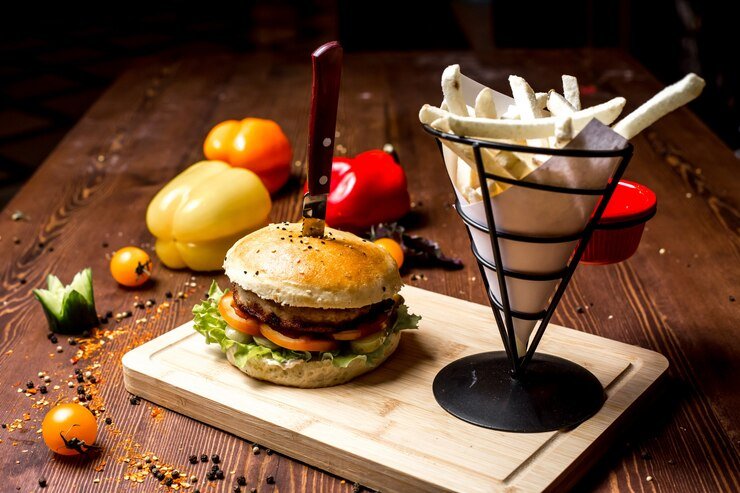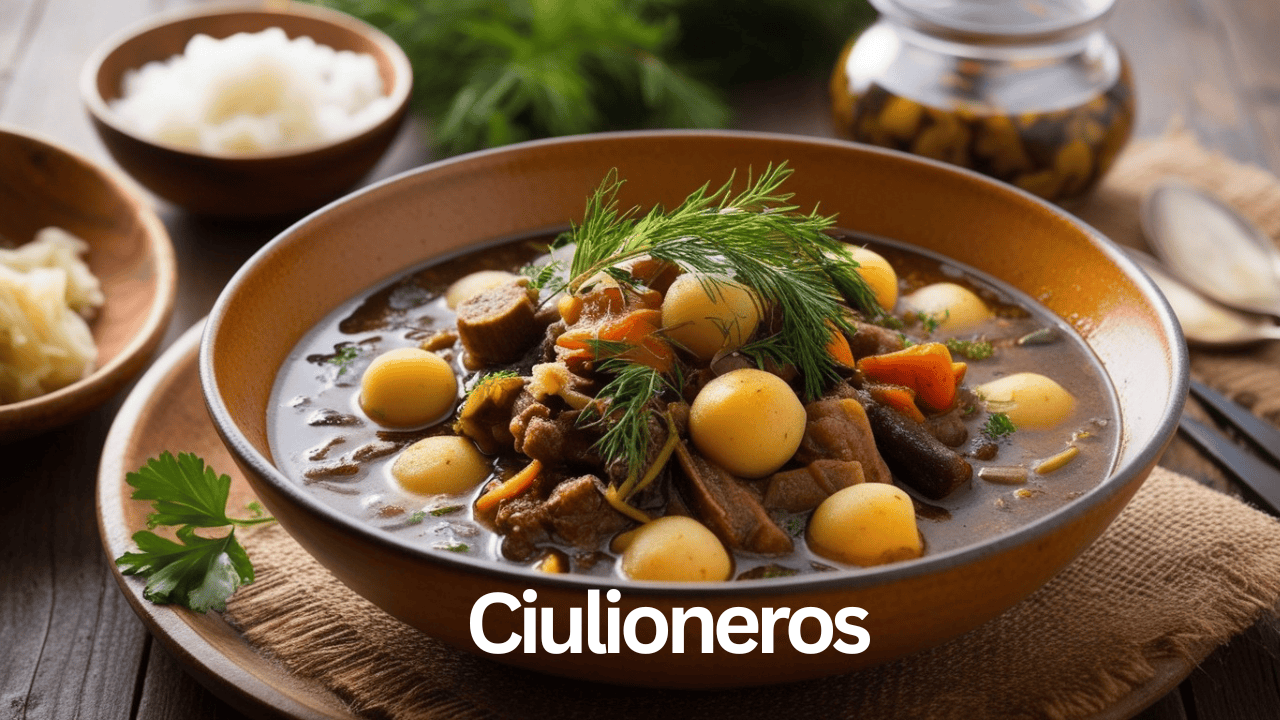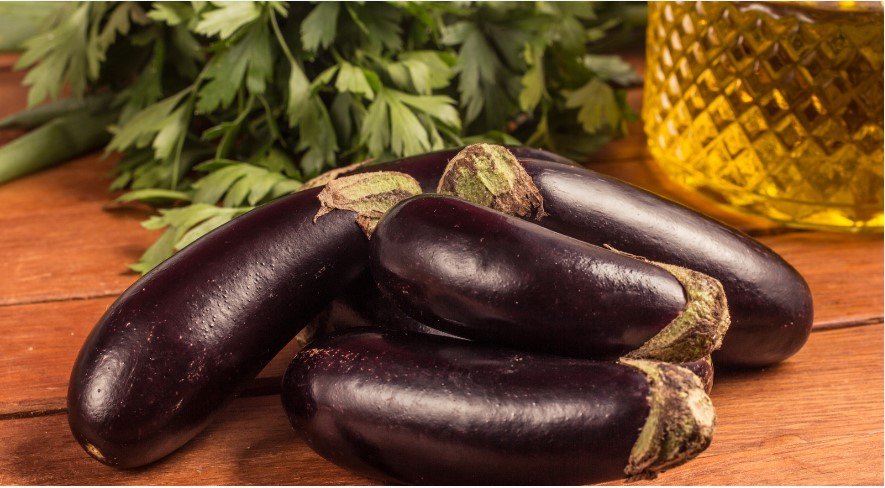Cooking
Burger and a grape snow cone is Perfect Pairing

In this article, we’ll dive into why a burger and a grape snow cone, make for such a great combination, the history behind these iconic foods, and how you can elevate this simple summer meal into an unforgettable experience.
The Magic of a Burger and a Grape Snow Cone
At first glance, a burger and a grape snow cone might seem like a mismatched duo. After all, one is a hot, savory dish, while the other is a cold, sugary treat. But this contrast is precisely what makes the pairing so perfect. Picture this: after taking a bite of a delicious, smoky burger, you follow it up with the cool, sweet sensation of a grape snow cone melting in your mouth. It’s a combination that delights your taste buds and cools you down during those hot summer days.
But this isn’t just a random food pairing. Burgers and snow cones are both deeply embedded in American summer culture, and together, they create an unbeatable summer vibe.
The History of Burgers
Burgers are synonymous with summer grilling, backyard barbecues, and casual meals. The origins of the hamburger can be traced back to the late 19th century when German immigrants brought their version of minced beef patties to the United States. Over time, the humble hamburger evolved into the all-American classic it is today—found everywhere from fast-food joints to gourmet restaurants.
The beauty of burgers lies in their versatility. Whether you prefer a classic beef patty, a turkey burger, or a plant-based alternative, the burger can be adapted to suit every taste.
The Origins of Snow Cones
On the other side of the pairing, snow cones have a rich history as well. Snow cones are believed to have originated in the 19th century when ice was first commercially harvested and shipped to warmer areas. Workers would shave off bits of ice and add sweet syrups to create an inexpensive and refreshing treat.
The snow cone quickly became a summer staple, and grape flavor, in particular, has remained a fan favorite for decades. The sweet, tart taste of grape syrup perfectly complements the refreshing texture of the finely shaved ice.
Why Burgers and Snow Cones Work Together
At their core, burgers and grape snow cones offer a delightful contrast. Burgers bring savory, smoky, and rich flavors to the table, while snow cones provide a light, sweet, and icy counterpart. The combination of hot and cold, heavy and light, creates a balance that satisfies on multiple sensory levels.
After the heaviness of a burger, the coolness of a grape snow cone refreshes your palate, making it the perfect dessert or even mid-meal refresher. Plus, it’s just fun—this duo feels like something you’d get at a county fair or a food truck festival.
Creating the Perfect Burger
While burgers might seem simple, crafting the perfect one requires some attention to detail. Here are some tips for grilling the ultimate burger:
- Choose the right meat: For a juicy burger, use ground beef with at least 20% fat content. If you’re making a plant-based burger, look for brands that focus on texture and flavor.
- Season well: A little salt and pepper go a long way. You can also add garlic powder, onion powder, or your favorite spices for an extra kick.
- Grill it right: For that delicious charred flavor, make sure your grill is hot before adding the patties. Cook them for about 4-5 minutes on each side, depending on your preferred level of doneness.
- Toppings matter: From classic lettuce, tomato, and onion to more gourmet toppings like avocado, bacon, and specialty cheeses, the right toppings can elevate your burger to the next level.
The Best Grape Snow Cone
Now, onto the other half of this summer pairing—the grape snow cone. Grape is a classic snow cone flavor for a reason. It has that nostalgic, fruity sweetness that both kids and adults love. Plus, it’s the perfect treat to cool off with after a hot meal.
To make your own grape snow cone at home, all you need is some finely shaved ice and a quality grape syrup. You can buy syrup from most grocery stores, or you can make your own using grape juice, sugar, and a little lemon juice for extra tartness.
Burger and Snow Cone Pairing Ideas
To elevate this pairing, consider mixing up your burger and snow cone options:
- Gourmet burgers: Try a blue cheese and caramelized onion burger paired with a tangy grape snow cone for a bold contrast in flavors.
- Classic cheeseburger: A classic American cheeseburger with pickles, ketchup, and mustard is always a hit, and it pairs beautifully with a simple grape snow cone.
- Snow cone variations: Add a splash of lemon or lime syrup to your grape snow cone for an extra refreshing twist.
The Nostalgia Factor
There’s something deeply nostalgic about a burger and a snow cone. For many, it brings back memories of summer barbecues, fairs, or trips to the beach. The simplicity of these foods makes them accessible to everyone, but the joy they bring is universal.
Serving Burgers and Snow Cones at Summer Parties
If you’re hosting a summer get-together, consider making burgers and grape snow cones the star of your menu. You can set up a DIY burger bar with various toppings and sauces, letting guests create their perfect burger. Follow it up with a snow cone station, where they can choose from an array of flavors, with grape being the star.
Healthier Alternatives
For those looking for a lighter option, there are ways to make both burgers and snow cones a bit healthier:
- Burgers: Opt for leaner meats like turkey or plant-based patties, and swap out the bun for lettuce wraps or whole-grain bread.
- Snow cones: Use natural fruit syrups or a homemade blend of pureed fruit and honey to cut down on the sugar.
Burger and Snow Cone Variations Around the World
While the burger is a global phenomenon, variations like Japan’s teriyaki burger or Mexico’s torta burger offer unique takes on this classic. Similarly, icy treats like Italy’s granita or Hawaii’s shave ice offer variations on the snow cone.
Conclusion
While unconventional, the pairing of a burger with a grape snow cone is a delightful way to mix up your dining experience. The contrast in temperature, flavor, and texture creates a dynamic eating experience that’s both satisfying and refreshing. Whether you’re hosting a summer cookout or just want to try something new for dinner, this combination is sure to surprise and delight both you and your guests. Give it a try, and enjoy this perfect pairing!
FAQs
1. Can I use other snow cone flavors instead of grape?
Absolutely! While grape offers a fantastic sweet-tart balance, other flavors like cherry, lemon, or even blue raspberry can pair well with a burger. It all comes down to personal preference. Try different flavors to see which one complements your burger best.
2. What type of burger works best with a grape snow cone?
A classic beef burger with simple seasonings is an ideal choice, but the pairing works just as well with chicken, turkey, or even plant-based burgers. The richness of the patty contrasts beautifully with the cold sweetness of the snow cone, no matter the type.
3. What’s the best occasion for serving this combo?
This pairing is ideal for summer barbecues, outdoor picnics, food truck festivals, or anytime you’re looking for a fun twist on your usual burger meal. It’s also a great idea for themed parties or family gatherings where you’re looking to offer something playful and unexpected.
4. How can I make a grape snow cone at home?
To make a grape snow cone, you’ll need shaved ice and grape syrup. You can either buy grape-flavored syrup or make your own by boiling grape juice with sugar until it thickens. Pour the syrup over your shaved ice, and voilà — you have a refreshing grape snow cone!
5. Are snow cones healthier than other burger pairings like fries or chips?
It depends on the ingredients. Traditional snow cones with sugary syrups aren’t necessarily healthier, but you can make a more nutritious version at home by using fresh grape juice or natural sweeteners. Plus, a snow cone offers hydration, which can be a bonus during hot weather.
Cooking
Ciulioneros Lithuania’s Traditional Cuisine and Cultural Heritage

Lithuania, known for its beautiful landscapes and rich cultural traditions, also boasts a unique culinary heritage. One of the highlights of Lithuanian cuisine is Ciulioneros, a traditional dish beloved for its earthy flavors and comforting warmth. Often served as a hearty dish that connects Lithuanians to their roots, Ciulioneros embodies a history that dates back centuries, reflecting the culinary influences of the region’s agricultural and rural lifestyles.
In this article, we’ll explore what makes Ciulioneros special, its historical significance, and how it’s made.
What is Ciulioneros?
The Ciulioneros dish is part of Lithuania’s rich culinary tradition, which is characterized by rustic flavors, local ingredients, and recipes passed down through generations. Made from simple but wholesome ingredients, Ciulioneros has a distinctive flavor that brings together the essence of Lithuanian cuisine—natural, earthy, and robust. Traditionally enjoyed as a meal during the cold seasons, it offers warmth and sustenance, a quality highly valued in a country with chilly winters.
Today, Ciulioneros is more than just a meal; it represents a slice of Lithuanian history and culture. Each region of Lithuania might add its twist, but the core of the dish remains a beloved staple in the hearts and homes of Lithuanians.
The History and Origins of Ciulioneros
The origins of Ciulioneros trace back to ancient Lithuanian food traditions. Lithuania, being a part of the larger Baltic region, shares culinary practices influenced by agrarian lifestyles, seasonal cycles, and available natural resources. Historically, Lithuanian dishes were built around grains, root vegetables, and meats due to the colder climate, which restricted the growing season. Ciulioneros fits perfectly within this profile, crafted as a warming dish that provides essential nutrients.
Over time, Ciulioneros became embedded in Lithuanian culture, often served during family gatherings and special occasions. Even as Lithuanian cuisine has evolved with the influence of neighboring cultures, Ciulioneros has maintained its place, often viewed as a culinary link to the past. It is not uncommon to find older generations teaching the younger ones how to prepare it, preserving the tradition in Lithuanian households.
Key Ingredients in Ciulioneros
The ingredients for Ciulioneros may vary slightly depending on the recipe or the region, but several key ingredients are essential for creating its distinctive taste:
- Dark Rye Bread: Known for its dense texture and rich flavor, dark rye bread is a staple in Lithuania and a main ingredient in Ciulioneros, adding depth and heartiness.
- Beetroot: Often included for its earthy flavor, beetroot also gives the dish a subtle sweetness and vibrant color.
- Onions and Garlic: These ingredients add aromatics and enhance the overall flavor profile.
- Root Vegetables: In some variations, potatoes, carrots, or parsnips may be added, depending on availability and preference.
- Dairy or Fermented Milk: Some recipes incorporate a form of dairy, such as kefir or buttermilk, adding a slightly tangy undertone.
These ingredients combine to create a unique dish that is both flavorful and filling. The inclusion of local produce and staples like rye bread reflects the rural, agrarian influences of Lithuanian cuisine.
Traditional Recipe for Ciulioneros
Creating Ciulioneros is a simple process, yet it requires patience to achieve the deep, layered flavors that make it special. Below is a traditional recipe that showcases the dish’s authentic flavor:
Ingredients:
- 500g dark rye bread, cubed
- 2 medium beetroots, peeled and grated
- 1 large onion, finely chopped
- 3 garlic cloves, minced
- 2-3 medium potatoes, peeled and cubed
- 1 carrot, peeled and sliced
- 2 liters of vegetable or beef broth
- Salt and black pepper to taste
- A dollop of sour cream or kefir (optional)
Instructions:
- Prepare the Base: In a large pot, heat a small amount of oil and sauté the onions and garlic until translucent.
- Add Vegetables: Add the grated beetroot, cubed potatoes, and carrot to the pot, stirring for about 5-10 minutes.
- Combine Ingredients: Pour in the broth, then add the cubed rye bread, stirring occasionally.
- Simmer: Let the mixture simmer for 30-40 minutes, allowing the flavors to meld and the bread to soften.
- Season and Serve: Season with salt and black pepper. Serve hot, optionally topped with a dollop of sour cream or kefir.
This simple yet flavorful dish is best enjoyed fresh, with each ingredient enhancing the overall richness of the Ciulioneros.
Cultural Significance of Ciulioneros in Lithuania
Ciulioneros holds a special place in Lithuanian culture, especially in rural areas where traditional meals are still celebrated. The dish is often served during family gatherings, holidays, and other special occasions, symbolizing unity and heritage. Lithuanian families take pride in their recipes, often handed down from one generation to the next, each family adding its unique touch.
In Lithuanian folklore and tradition, meals made from rye bread and root vegetables are believed to bring good fortune and health. Sharing Ciulioneros during significant events brings a sense of connection to Lithuanian roots and culture, reinforcing family ties and the sense of belonging.
Nutritional Benefits of Ciulioneros
The ingredients used in Ciulioneros not only offer great flavor but also provide important nutrients:
- Dark Rye Bread: High in fiber, rye bread supports digestive health and keeps you full longer.
- Beetroot: Rich in antioxidants, iron, and vitamin C, beets support immune function and cardiovascular health.
- Root Vegetables: Potatoes and carrots add essential vitamins like vitamin A, potassium, and magnesium, supporting overall health.
- Dairy: If included, dairy provides calcium and protein, adding to the dish’s nutritional profile.
Overall, Ciulioneros is a nutrient-dense meal that aligns with the traditional Lithuanian diet, providing a balanced mix of carbohydrates, fiber, and vitamins.
Variations of Ciulioneros Across Regions
Though the basic recipe remains consistent, variations exist depending on regional preferences:
- With Meat: Some regions add pork or beef for extra richness, particularly during colder months.
- Vegetarian Versions: In more modern renditions, people opt for vegetable-only recipes, which highlight seasonal produce.
- Fermented Ingredients: Some families add fermented rye or kvass for a tangy twist that enhances the dish’s complexity.
These variations showcase the adaptability of Ciulioneros and its ability to cater to different tastes while preserving its core identity.
The Future of Ciulioneros in Modern Lithuanian Cuisine
As Lithuanian cuisine gains recognition on the global stage, dishes like Ciulioneros are experiencing a resurgence among both locals and visitors. Lithuanian restaurants are increasingly adding traditional dishes to their menus, often with a modern twist, to celebrate the country’s culinary heritage. Additionally, younger generations are rediscovering the joys of traditional dishes, taking pride in recipes that connect them to their ancestors.
Today, the growing interest in traditional foods like Ciulioneros aligns with the global trend towards farm-to-table and sustainable eating practices. By embracing traditional recipes that utilize local ingredients, Lithuanians are helping to preserve both their cultural heritage and the environment.
Conclusion
Ciulioneros is more than just a dish; it’s a symbol of Lithuanian history, resilience, and love for traditional flavors. From its origins in the rustic kitchens of rural Lithuania to its place in contemporary dining, Ciulioneros reflects the country’s agricultural roots and its commitment to wholesome, flavorful food. Whether enjoyed at a family gathering or discovered by a traveler eager to experience Lithuania’s rich culture, Ciulioneros remains a beloved part of Lithuania’s culinary landscape.
FAQs
What is Ciulioneros?
Ciulioneros is a traditional Lithuanian dish made from dark rye bread, beetroots, onions, garlic, and other local ingredients, often enjoyed as a hearty meal during cold weather.
Is Ciulioneros vegetarian-friendly?
Yes, many recipes for Ciulioneros are vegetarian-friendly, although some variations may include meat. Vegetarians can enjoy the dish by using vegetable broth and omitting any animal products.
What is the origin of Ciulionero?
Ciulioneros has its roots in ancient Lithuanian culinary traditions, created as a hearty, warming dish using locally available ingredients such as rye bread, beetroots, and root vegetables.
Can Ciulionero be made vegan?
Absolutely! By using vegetable broth and omitting dairy, Ciulioneros can easily be made vegan, and still retain its rich, traditional flavor.
How is Ciulionero typically served?
Ciulionero is usually served hot, often with a dollop of sour cream or kefir, which adds a creamy contrast to the earthy flavors of the dish.
Is Ciulionero commonly served in Lithuanian restaurants?
Yes, as Lithuanian cuisine gains popularity, many restaurants in Lithuania and abroad are including traditional dishes like Ciulionero on their menus, often with a modern twist.
Cooking
America’s best wings 25 Flavors, Restaurants

Chicken wings have become a quintessential American favorite, often served at sports bars, family dinners, or weekend parties. Whether you prefer spicy, sweet, smoky, or coated in zesty sauces, America’s best wings offer something for every palate. Originating from Buffalo, New York, the love for wings has spread nationwide, with local twists and culinary creativity redefining the classic wing experience. In this article, we’ll explore the most popular wing flavors, the best restaurants across the nation, and tips on how to enjoy your wings to the fullest.
America’s Best Wings: A Culinary Journey Across the States
The phrase “America’s best wings” doesn’t just refer to traditional Buffalo wings anymore. It reflects a spectrum of sauces, dry rubs, and preparations that showcase regional diversity. From Nashville’s hot wings to Asian-inspired sticky wings, let’s dive into the best ways to enjoy this beloved dish.
The Origin of America’s Best Wings Craze
Chicken wings shot to fame in 1964 at the Anchor Bar in Buffalo, New York, where Teressa Bellissimo deep-fried the first batch of what we now call Buffalo wings. This dish quickly gained traction, with its signature hot sauce and creamy blue cheese dip becoming a game-changer. However, wings have evolved far beyond their humble beginnings to become a cultural phenomenon across the U.S.
Why Are Chicken Wings So Popular in the U.S.?
- Perfect Finger Food: Wings are easy to eat and perfect for gatherings.
- Versatile Flavors: Wings cater to all tastes, with options ranging from mild to insanely hot.
- Affordable and Shareable: Most restaurants offer large platters, encouraging sharing among friends and family.
- Sporting Event Staple: Wings and sports go hand-in-hand, especially during football season and Super Bowl parties.
Top Wing Flavors Across America
Buffalo Wings
The original and still beloved, Buffalo wings are drenched in hot sauce and butter, with a side of blue cheese dressing and celery sticks.
Honey BBQ Wings
For those who enjoy sweet and smoky, Honey BBQ wings are a perfect balance of barbecue sauce and sticky sweetness.
Garlic Parmesan Wings
This flavor combines buttery garlic sauce with grated Parmesan, offering a savory alternative to spicy varieties.
Lemon Pepper Wings
A Southern favorite, lemon pepper wings bring a zesty and peppery kick that makes every bite addictive.
Nashville Hot Wings
Inspired by Nashville’s hot chicken, these wings come with a fiery blend of cayenne pepper and spices, offering serious heat.
Teriyaki Wings
For a sweet and salty taste, teriyaki wings with soy glaze and sesame seeds make for a delicious fusion option.
Best Wing Restaurants in the U.S.
Anchor Bar – Buffalo, New York
The birthplace of the Buffalo wing is still a go-to destination for wing enthusiasts who want to experience the original recipe.
The Varsity – Atlanta, Georgia
Known for its lemon pepper wings, The Varsity is a Southern classic that draws locals and tourists alike.
Pluckers Wing Bar – Texas
This Texas-based chain offers a range of creative wing flavors, from spicy ranch to mango habanero, alongside loaded fries and fried pickles.
Duff’s Famous Wings – Buffalo, New York
Another Buffalo staple, Duff’s is known for its intensely spicy wings and an unpretentious atmosphere.
Hattie B’s Hot Chicken – Nashville, Tennessee
While primarily famous for hot chicken, Hattie B’s wings are equally impressive, offering varying heat levels from mild to “Shut the Cluck Up.”
Wingstop – Nationwide
With locations across the country, Wingstop serves up consistently tasty wings in flavors like atomic, garlic parmesan, and Cajun.
Regional Wing Styles You Should Know
- Kansas City-Style BBQ Wings: Coated in tangy, tomato-based BBQ sauce with a slightly sweet finish.
- New Orleans Cajun Wings: Rubbed with Creole spices for bold flavor, these wings pack some Southern flair.
- Korean Fried Chicken Wings: Double-fried for extra crunch, these wings come in sauces like soy-garlic or spicy gochujang.
How to Host the Perfect Wing Party at Home
- Offer Multiple Flavors: Provide a range of sauces like Buffalo, BBQ, and teriyaki to cater to different preferences.
- Serve with Dips: Blue cheese, ranch, and honey mustard dips enhance the flavors of your wings.
- Complement with Sides: Fries, onion rings, and coleslaw are great sides for a wing spread.
- Include Beverages: Beer pairs wonderfully with wings, but don’t forget soda, iced tea, and lemonade for non-drinkers.
- Set Up a Wing Bar: Create a DIY wing bar where guests can toss their wings in the sauce of their choice.
Tips for Cooking America’s best wings at Home
- Use Fresh Wings: Fresh wings cook better and have a superior taste compared to frozen ones.
- Double-Fry for Extra Crispiness: Frying the wings twice ensures a crunchy texture on the outside.
- Marinate Overnight: Marinating wings in buttermilk or brine infuses them with flavor.
- Don’t Skip the Sauce: Toss your wings in the sauce while they’re still hot to absorb maximum flavor.
The Healthier Side of Wings
While traditional wings are fried, there are healthier ways to enjoy them:
- Baked Wings: Baking wings in the oven reduces oil and calories.
- Air-Fried Wings: Air fryers offer the crunch of fried wings without the extra fat.
- Grilled Wings: Grilling adds a smoky flavor while keeping the meal light.
America’s Best Wings: A Must-Try for Every Foodie
Trying America’s best wings should be on every foodie’s list. Each region brings its own flair, offering everything from classic Buffalo wings to exotic Korean-inspired creations. Whether you visit a renowned restaurant or whip up a batch at home, there’s always a new flavor to explore.
Conclusion
America’s best wings represent more than just a popular dish—they embody regional pride, culinary creativity, and the joy of sharing meals with loved ones. From iconic Buffalo-style wings to innovative flavors like Nashville hot and Korean fried, there’s a wing for every taste. Whether you prefer your wings spicy, sweet, or crunchy, the diversity across the U.S. ensures that you’ll never run out of delicious options to explore. So, next time you’re craving wings, try something new or revisit a classic favorite—because, after all, nothing brings people together quite like a platter of America’s best wings.
Frequently Asked Questions About America’s best wings
What makes Buffalo wings different from other wings?
Buffalo wings are deep-fried and tossed in a tangy hot sauce made with cayenne pepper and butter. They are traditionally served with blue cheese dressing.
Which restaurant serves the spiciest wings in America?
Places like Duff’s Famous Wings and Hattie B’s offer some of the hottest wings with extreme spice levels.
How can I make my wings crispy without frying them?
Baking wings on a wire rack or using an air fryer will ensure they turn out crispy without needing deep frying.
What is the most popular wing flavor in America?
Buffalo wings remain the most iconic, but flavors like honey BBQ, lemon pepper, and garlic Parmesan are also widely loved.
Are boneless wings real wings?
Technically, boneless wings are made from chicken breast meat, not wing meat, but they deliver a similar taste and experience.
What are the best sides to serve with chicken wings?
Classic sides include fries, celery sticks, onion rings, coleslaw, and dipping sauces like ranch or blue cheese.
Cooking
Mini Eggplant Pepper & Eggplant Pepper Recipe

The mini eggplant pepper is a fascinating vegetable that blends the appearance and taste of eggplants and peppers, offering a one-of-a-kind culinary experience. As gardeners and food enthusiasts explore new hybrids, this small, colorful vegetable has caught attention for both its versatility in cooking and its ornamental beauty. With the texture of eggplant and the mild sweetness of bell peppers, the mini eggplant pepper is perfect for adventurous cooks and home gardeners looking for something unique.
In this article, we’ll dive into what makes the mini eggplant pepper special—exploring its appearance, health benefits, culinary uses, and tips for growing it at home.
Baby Eggplant Pepper & its Characteristics
The mini eggplant pepper is a small, hybrid vegetable that looks like a cross between an eggplant and a pepper. Though it is botanically more related to eggplants, its compact size and sweetness mimic the profile of certain pepper varieties. These bite-sized fruits often have smooth, glossy purple or green skin and range in shape from rounded to slightly elongated.
- Size and Shape: Mini eggplant peppers are smaller than traditional eggplants, typically about 2-4 inches in length. Their shapes vary from round to teardrop, similar to mini bell peppers.
- Color: They usually appear in dark purple, lavender, or green shades, with some varieties showcasing streaks or patterns.
- Texture and Flavor: These mini vegetables have firm, smooth skin and a tender interior, with a taste that is mild and slightly sweet—less bitter than traditional eggplants.
- Seeds: Like eggplants, they contain small seeds, though they are soft enough to eat without any discomfort.
Nutritional Value and Health Benefits
The mini eggplant pepper packs a nutritious punch, offering a variety of vitamins, antioxidants, and fiber. Here’s a breakdown of its key health benefits:
- Rich in Antioxidants: The vibrant purple and green colors come from anthocyanins, powerful antioxidants that help combat inflammation and protect cells from damage.
- High in Fiber: Just like eggplants, these mini versions are rich in dietary fiber, supporting healthy digestion and preventing constipation.
- Low in Calories: A great choice for those watching their weight, mini eggplant peppers are low in calories and fat, making them ideal for healthy diets.
- Good Source of Vitamins: They contain vitamins A, C, and K, which promote eye health, boost immunity, and support blood clotting.
- Mineral-Rich: The vegetable offers small amounts of potassium and magnesium, which are essential for maintaining normal blood pressure and muscle function.
With these nutritional benefits, mini eggplant peppers are a great addition to any meal, helping to promote heart health and improve immune function.
How to Use Mini Eggplant Peppers in Cooking
One of the best things about mini eggplant peppers is their culinary versatility. Thanks to their size, flavor, and texture, they can be used in a wide variety of dishes. Below are some ways to incorporate them into your cooking:
- Stuffed Mini Eggplant Peppers: Cut the tops off, scoop out some flesh, and stuff them with a mixture of cheese, quinoa, herbs, or minced meat. Bake until tender for a delicious appetizer.
- Roasted or Grilled: Drizzle them with olive oil, sprinkle with salt, and roast or grill them until soft. This enhances their sweetness and makes them perfect as a side dish.
- In Salads: Slice raw mini eggplant peppers and toss them into salads for a pop of color and a mild crunch.
- Stir-Fry and Curries: Their firm texture holds well in stir-fries and curries, absorbing flavors while maintaining their shape.
- Pickling: They can also be pickled in brine to create a tangy snack or topping for sandwiches and burgers.
These versatile vegetables pair well with Mediterranean, Asian, and Middle Eastern flavors, making them a great addition to many international dishes.
Mini Eggplant Pepper Recipe
Ingredients:
- 10-12 mini eggplant peppers (purple or green)
- 2 tablespoons olive oil
- 2 garlic cloves, minced
- 1/2 cup ricotta or feta cheese (crumbled)
- 1/4 cup breadcrumbs (optional for added texture)
- 1/4 cup Parmesan cheese, grated
- 1 tablespoon fresh parsley or basil, chopped
- 1/2 teaspoon salt
- 1/2 teaspoon black pepper
- Red chili flakes (optional for a spicy kick)
Instructions:
- Preheat the Oven
Preheat your oven to 375°F (190°C). Line a baking sheet with parchment paper or lightly grease it with olive oil. - Prepare the Mini Eggplant Peppers
Slice the mini eggplant peppers lengthwise and scoop out some of the seeds and pulp with a small spoon. This creates space for the filling. - Make the Filling
In a bowl, combine the ricotta or feta cheese, Parmesan, breadcrumbs (if using), minced garlic, parsley, salt, and pepper. Add chili flakes if you want a touch of heat. Mix until well combined. - Stuff the Peppers
Spoon the cheese mixture into each mini eggplant pepper half, packing it in lightly. Drizzle olive oil over the stuffed peppers to prevent them from drying out during baking. - Bake the Peppers
Place the stuffed mini eggplant peppers on the prepared baking sheet. Bake for 20-25 minutes or until the tops are golden brown and the peppers are soft and slightly wrinkled. - Garnish and Serve
Remove from the oven and let the peppers cool slightly. Garnish with additional parsley or a sprinkle of Parmesan before serving.
Growing Mini Eggplant Peppers at Home
If you’re a gardening enthusiast, growing mini eggplant peppers at home is a rewarding experience. These plants are relatively easy to care for and thrive in warm climates with lots of sunshine. Below are some tips to help you get started:
Planting Tips
- Soil: Choose well-draining soil enriched with organic matter. A pH between 6.0 and 7.0 works best.
- Sunlight: Mini eggplant pepper plants require 6-8 hours of direct sunlight daily for optimal growth.
- Temperature: They thrive in warm conditions, ideally between 70-85°F (21-29°C). Avoid frost, as these plants are sensitive to cold.
Watering and Maintenance
- Watering: Keep the soil evenly moist but not waterlogged. Water deeply to promote strong roots.
- Fertilizing: Use a balanced fertilizer every 2-3 weeks during the growing season to support fruit production.
- Pruning: Regularly prune the plants to remove yellowing leaves and promote better airflow.
Harvesting Mini Eggplant Peppers
Mini eggplant peppers are typically ready to harvest 60-75 days after planting. Look for fruits that are fully colored and slightly firm to the touch. Avoid waiting too long to harvest, as overripe fruits may lose their flavor and texture.
These plants also do well in containers, making them perfect for urban gardeners with limited space.
Conclusion
The mini eggplant pepper is a unique and versatile vegetable that combines the best of both eggplants and peppers. With its compact size, mild sweetness, and stunning colors, it’s perfect for culinary experiments and home gardening. Whether you roast, stuff, or pickle them, these mini vegetables add a burst of flavor and nutrition to your meals.
Beyond their culinary appeal, they offer numerous health benefits and are easy to grow, even in small spaces. Whether you’re an experienced gardener or a beginner, adding mini eggplant peppers to your garden can be a delightful experience. Give them a try—you’ll enjoy both their beauty and taste!
FAQs
What do mini eggplant peppers taste like?
Mini eggplant peppers have a mild, slightly sweet flavor with a tender texture. They are less bitter than traditional eggplants, making them ideal for a variety of dishes.
Can I eat mini eggplant peppers raw?
Yes, you can eat them raw. They add a mild crunch and sweetness to salads and can be enjoyed as a healthy snack.
How long does it take to grow mini eggplant peppers?
These vegetables typically take 60-75 days from planting to harvest, depending on growing conditions.
Do mini eggplant peppers need a lot of sunlight?
Yes, they thrive in full sunlight, requiring 6-8 hours of direct light each day for optimal growth.
Are mini eggplant peppers good for container gardening?
Absolutely! Their compact size makes them ideal for container gardening on balconies or patios.
What’s the best way to store mini eggplant peppers?
Store them in a cool, dry place or refrigerate them. They can stay fresh for up to 7-10 days if kept properly.
-

 Technology3 months ago
Technology3 months agointernet chicks: A Digital Phenomenon
-

 Recipes4 months ago
Recipes4 months agoSmoothie CCL: A Delicious and Nutritious Trend
-

 FOOD4 months ago
FOOD4 months agoNasi Uduk
-

 Recipes4 months ago
Recipes4 months agoThe Ultimate Bug Juice Camp Drink Recipe for Fun and Flavor
-

 Recipes4 months ago
Recipes4 months agoCrab Brulee Recipe: A Gourmet Delight
-

 BLOGS4 months ago
BLOGS4 months agoUnveiling the Innovation: BoltBól – Revolutionizing Accessibility and Mobility
-

 FOOD4 months ago
FOOD4 months agoCornflake Meringue Cookies
-

 FOOD4 months ago
FOOD4 months agoÇeciir: A Journey Through Turkish Cuisine
